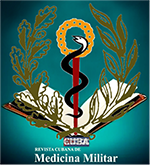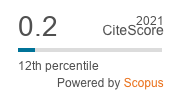Evaluación preliminar de Jusvinza como terapia inmunomoduladora en el síndrome de Guillain Barré
Palabras clave:
inflamación, Jusvinza, pacientes, síndrome de Guillain-BarréResumen
Introducción: El síndrome de Guillain-Barré (SGB) es una polineuropatía inflamatoria aguda, cuya fisiopatología se basa en el daño del sistema nervioso periférico por componentes del sistema inmunológico. Jusvinza es un fármaco inmunomodulador empleado en pacientes con artritis reumatoide y COVID-19. La acción antiinflamatoria de Jusvinza respalda su uso potencial en enfermedades como el SGB.
Objetivos: Evaluar el efecto terapéutico y la seguridad de Jusvinza en el tratamiento del SGB.
Métodos: Se incluyeron 13 pacientes diagnosticados con SGB asociado principalmente a infecciones respiratorias; 11 recibieron Jusvinza, a una dosis de 1 mg cada 8 horas por vía i.v., mientras que los 2 restantes se trataron con la terapia estándar. Se documentó en las historias clínicas la evolución clínica, el tiempo de recuperación, la duración de la estancia en la unidad de cuidados intensivos (UCI), los eventos adversos y el estado al egreso. Posteriormente, estos datos fueron organizados y analizados mediante tablas comparativas.
Resultados: Jusvinza redujo en promedio los tiempos de recuperación y estancia en la UCI en 18 y 27 días, respectivamente, en comparación con las inmunoterapias estándar. No se registraron afecciones respiratorias ni otras complicaciones; tampoco se observaron efectos adversos graves asociados al tratamiento. Todos los pacientes evolucionaron favorablemente y fueron dados de alta
Conclusiones: Jusvinza induce una mejoría rápida en los pacientes con el SGB, con buen perfil de seguridad, lo que representa un punto de partida para investigaciones futuras.
Descargas
Citas
1. Hughes RA, Cornblath DR. Guillain-Barré syndrome [Internet]. The Lancet. 2005; 366(9497): 1653-66. DOI: 10.1016/S0140-6736(05)67665-9
2. Shoenfeld Y, George J, Peter JB. Guillain-Barre as Autoimmune disease [Internet]. International Archives of Alergy and Immunology. 1996; 109: 318-326. DOI: 10.1159/000237258
3. Susuki K, Rasband MN, Tohyama K, Koibuchi K, Okamoto S, Funakoshi K, et al. Anti-GM1 Antibodies Cause Complement-Mediated Disruption of Sodium Channel Clusters in Peripheral Motor Nerve Fibers [Internet]. J Neurosci. 2007; 27(15): 3956 –67. DOI: 10.1523/JNEUROSCI.4401-06.2007
4. Nguyen TP, Taylor RS. Guillain-Barre Syndrome [Internet]. Treasure Island (FL): StatPearls Publishing; 2025. [acceso: 23/03/2025]. Disponible en: https://www.ncbi.nlm.nih.gov/books/NBK532254
5. Hartung HP, Toyka KV. T-cell and Macrophage Activation in Experimental Autoimmune Neuritis and Guillain-Barre Syndrome [Internet]. Annals of Neurology.1990; 27: S57-S63. DOI: 10.1002/ana.410270716
6. Koike H, Nishi R, Ikeda S, Kawagashira Y, Iijima M, Katsuno M, et al .Ultrastructural mechanisms of macrophage-induced demyelination in CIDP [Internet]. Neurology. 2018; 91: 1-10. DOI: 10.1212/WNL.0000000000006625
7. World Health Organization. Assessment and management of Guillain-Barré syndrome in the context of Zika virus infection [Internet]. WHO, Interim guidance update. 2016 [acceso: 10/03/2025]; 1(16.4): [aprox. 10 pant.]. Disponible en: https://www.who.int/publications/i/item/WHO-ZIKV-MOC-16.4-Rev.1
8. Dominguez MC, Lorenzo N, Barbera A, Darrasse-Jeze G, Hernández MV, Torres A, et al. An altered peptide ligand corresponding to a novel epitope from heat-shock protein 60 induces regulatory T cells and suppresses pathogenic response in an animal model of adjuvant-induced arthritis [Internet]. Autoimmunity. 2011; 44(6): 471-82. DOI: 10.3109/08916934.2010.550590
9. Venegas-Rodriguez R, Santana-Sanchez R,Peña-Ruiz R, Bequet-Romero M, Hernandez-Cedeño M, Santiesteban-Licea E, et al. CIGB-258 Immunomodulatory Peptide: Compassionate Use for Critical and Severe COVID-19 Patients [Internet]. Austin J Pharmacol Ther. 2020 [acceso: 22/03/2025]; 8(1):1119. Disponible en: https://austinpublishinggroup.com/pharmacology-therapeutics/fulltext/ajpt-v8-id1119.php
10. Baldomero JE, Del Río Martín A, Cruz LR,Venegas R, Hernández M, Serrano A,Peña R, et al. Early Treatment with a Peptide Derived from the Human Heat-Shock 60 Protein Avoids Progression to Severe Stages of COVID-19 [Internet]. J Biotechnol Biomed. 2021; 4(4): 196-210. DOI: 10.26502/jbb.2642-91280045
11. Venegas-Rodríguez R,Serrano-Díaz A, Peña-Ruiz R, Santana R, Hernández-Cedeño M, Rittoles Navarro A, et al. Jusvinza, an anti-inflammatory drug derived from the human heat-shock protein 60, for critically ill COVID-19 patients. An observational study[Internet]. PLoSONE. 2022;18 (2): e0281111. DOI: 10.1371/journal.pone.0281111
12. WMA. World Medical Association Declaration of HelsinkiEthical Principles for Medical Research Involving Human Participants. JAMA; 2025;333;(1):71-74. DOI: 10.1001/jama.2024.21972
13. Ministerio de Salud Pública. Regulación No. 45-2007: Requerimientos para la notificación y el reporte de eventos adversos graves e inesperados en los ensayos clínicos [Internet]. La Habana: CECMED; 2007. [acceso: 22/03/2025]. Disponible en: https://www.cecmed.cu/sites/default/files/adjuntos/Reglamentacion/reg_4507_requerimientos_para_la_notificacion_y_el_reporte_de-_eventos_adversos_graves_e_inesperados_en_los_ensayos_clinicos.pdf
14. Quan S, Sheng JR,Abraham PM. Regulatory T and B lymphocytes in a spontaneous autoimmune polyneuropathy [Internet]. Clin Exp Immunol. 2016; 184:50-61. DOI: 10.1111/cei.12756
15. Domínguez MC, Lorenzo N, Barberá A, Padrón G, Torres AM ,Hernández MV, et al. Therapeutic effect of two altered peptide ligands derived from the human heat shock protein 60 in experimental models of rheumatoid arthritis [Internet]. Biotecnología Aplicada. 2013 [acceso: 23/03/2025]; 30(2):153-6. Disponible en: https://www.medigraphic.com/cgi-bin/new/resumenI.cgi?IDARTICULO=48194
16. Lorenzo N, Altruda F, Silengo L, Dominguez MC. APL-1, an altered peptide ligand derived from heat-shock protein, alone or combined with methotrexate attenuates murine collageninduced arthritis [Internet]. Clin Exp Med. 2017; 17(2):209-16. DOI: 10.1007/s10238-016-0412-7
17. Barberá A, Lorenzo N, Garrido G, Mazola Y, Falcón V, Torres AM, et al . APL-1, an altered peptide ligand derived from human heat-shock protein 60, selectively induces apoptosis in activated CD4+ CD25+ T cells from peripheral blood of rheumatoid arthritis patients [Internet]. Int Immunopharmacol. 2013; 17(4):1075-83. DOI: 10.1016/j.intimp.2013.10.010
18. Barberá A, Lorenzo N, van Kooten P, van Roon J, de Jager W, Prada D, et al. APL1, an altered peptide ligand derived from human heat-shock protein 60, increases the frequency of Tregs and its suppressive capacity against antigen responding effector CD4+Tcells from rheumatoid arthritis patients [Internet]. Cell Stress Chaperones. 2016; 21(4):735-44. DOI: 10.1007/s12192-016-0698-0
19. Hernández-Cedeño M, Rodríguez-Ulloa A, Ramos Y, González LJ, Serrano-Díaz A, Zettl K, Wiśniewski JR, et al. Proteomic Profile Regulated by the Immunomodulatory Jusvinza Drug in Neutrophils Isolated from Rheumatoid Arthritis Patients [Internet]. Biomedicin. 2024; 29(12):2740. DOI: 10.3390/biomedicines12122740
20. Hernandez-Cedeño M, Venegas-Rodriguez R, Peña-Ruiz R, Bequet-Romero M, Santana-Sanchez R, Penton-Arias E, et al. CIGB-258, a peptide derived from human heat-shock protein 60, decreases hyperinflammation in COVID-19 patients [Internet]. Cell Stress Chaperones. 2021; 26(3):515-25. DOI: 10.1007/s12192-021-01197-2
21. Venegas R, Serrano A, Peña R, Santana R, Rittoles A, Grecesqui I et al. El tratamiento con Jusvinza disminuye la hiperinflamación y la hipercoagulación en pacientes críticos con la COVID-19 [Internet]. Rev Cub Med Mil. 2021 [acceso: 22/03/2025]; 50(4): e02101675. Disponible en: http://scielo.sld.cu/scielo.php?script=sci_arttext&pid=S0138-65572021000400018&lng=es
22. Ackermann G, Paw B. Zebrafish: a genetic model for vertebrate organogenesis and human disorders [Internet]. Front Biosci. 2003; 8: d1227-53. DOI: 10.2741/1092
23. Cho KH, Nam HS, Kim JE, Na HJ, Dominguez-Horta MC, Martinez-Donato G. CIGB-258 Exerts Potent AntiInflammatory Activity against CarboxymethyllysineInduced Acute Inflammation in Hyperlipidemic Zebrafish via the Protection of Apolipoprotein A-I [Internet]. Int J Mol Sci. 2023; 24:7044. DOI: 10.3390/ijms24087044
24. Cho KH, Bahuguna A, Lee Y, Lee SH, Dominguez-Horta MC, Martinez-Donato G. Synergistic Anti Inflammatory Activity of Lipid-Free Apolipoprotein (apo) A-I and CIGB-258 in Acute-Phase Zebrafish via Stabilization of the apoA-I Structure to Enhance Anti-Glycation and Antioxidant Activities [Internet]. Int J Mol Sci. 2024; 25(10): 5560. DOI: 10.3390/ijms25105560
25. Cho KH, Kim JE, Kang DJ, Dominguez-Horta MC, Martinez-Donato G. Synergistic Anti-Inflammatory Activity of Apolipoprotein A-I and CIGB-258 in Reconstituted High-Density Lipoproteins (rHDL) against Acute Toxicity of Carboxymethyllysine in Zebrafish and Its Embryo [Internet]. Pharmaceuticals. 2024; 17(2):165. DOI: 10.3390/ph17020165
26. IWMF: International Waldenstrom´s Macroglobulinemia Foundation. Ficha técnica de la Plasmaféresis [Internet]. IWMF; 2015. [acceso: 10/03/2025]. Disponible en: https://iwmf.com/wp-content/uploads/2020/10/Plasmapheresis-Fact-Sheet-Spanish.pdf
27. Centro para el Control Estatal de Medicamentos Equipos y Dispositivos Médicos. Resumen de las características del producto Intacglobin [Internet]. Cuba, La Habana: CECMED; 2013. [acceso: 20/03/2025]. Disponible en: https://www.cecmed.cu/sites/default/files/adjuntos/rcp/biologicos/rcp_intacglobin_5_2013-12-19.pdf
28. Domínguez-Horta MDC, Serrano-Díaz A, Hernández-Cedeño M, Martínez-Donato G, Guillén-Nieto G. A peptide derived from HSP60 reduces proinflammatory cytokines and soluble mediators: a therapeutic approach to inflammation [Internet]. Front Immunol. 2023; 28(14):1162739. DOI: 10.3389/fimmu.2023.1162739.89
29. Prada D , Gómez J, Lorenzo N, Corrales O, López A, González E, et al. Phase I Clinical Trial with a Novel Altered Peptide Ligand Derived from Human Heat-Shock Protein 60 for Treatment of Rheumatoid Arthritis: Safety, Pharmacokinetics and Preliminary Therapeutic Effects [Internet]. Journal of Clinical Trials. 2018; 8(1):1000339. DOI: 10.4172/2167-0870.1000339
Publicado
Cómo citar
Número
Sección
Licencia
Derechos de autor 2025 Raúl Santana-Sanchez R, Anabel Serrano-Díaz, Rubén Peña-Ruiz, Mabel Hernandez-Cedeñp, Gillian Martinez-Donato , Rafael Venegas-Rodriguez, María del Carmen Domínguez Horta

Esta obra está bajo una licencia internacional Creative Commons Atribución-NoComercial-CompartirIgual 4.0.
Aquellos autores/as que tengan publicaciones con esta revista, aceptan los términos siguientes:- Los autores/as conservarán sus derechos de autor y garantizarán a la revista el derecho de primera publicación de su obra, el cual estará simultáneamente sujeto a la Licencia de reconocimiento de Creative Commons. Los contenidos que aquí se exponen pueden ser compartidos, copiados y redistribuidos en cualquier medio o formato. Pueden ser adaptados, remezclados, transformados o creados otros a partir del material, mediante los siguientes términos: Atribución (dar crédito a la obra de manera adecuada, proporcionando un enlace a la licencia, e indicando si se han realizado cambios); no-comercial (no puede hacer uso del material con fines comerciales) y compartir-igual (si mezcla, transforma o crea nuevo material a partir de esta obra, podrá distribuir su contribución siempre que utilice la misma licencia que la obra original).
- Los autores/as podrán adoptar otros acuerdos de licencia no exclusiva de distribución de la versión de la obra publicada (p. ej.: depositarla en un archivo telemático institucional o publicarla en un volumen monográfico) siempre que se indique la publicación inicial en esta revista.
- Se permite y recomienda a los autores/as difundir su obra a través de Internet (p. ej.: en archivos telemáticos institucionales o en su página web) antes y durante el proceso de envío, lo cual puede producir intercambios interesantes y aumentar las citas de la obra publicada.






